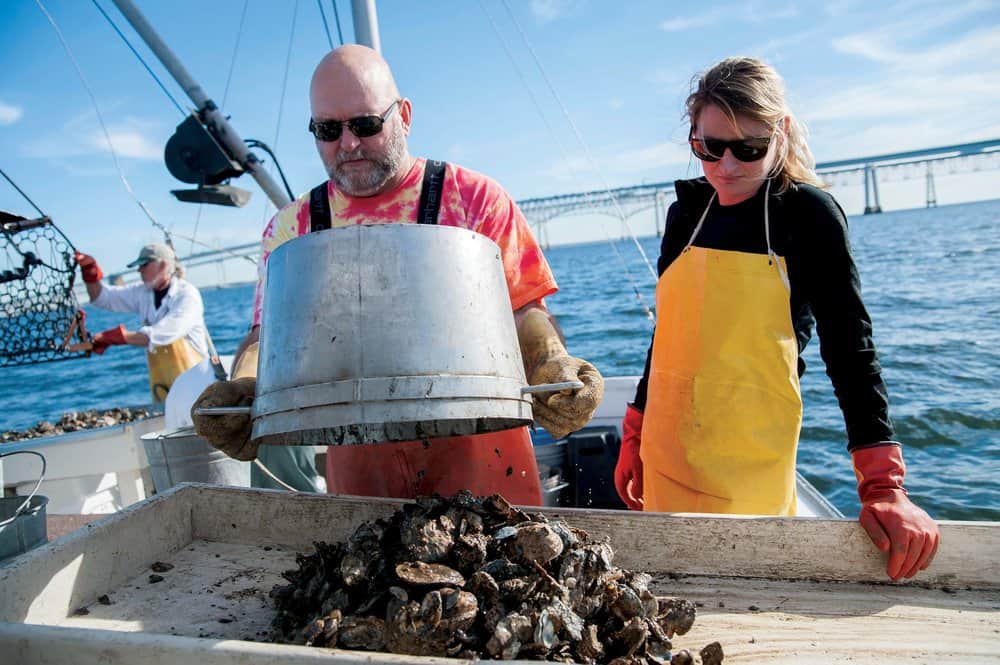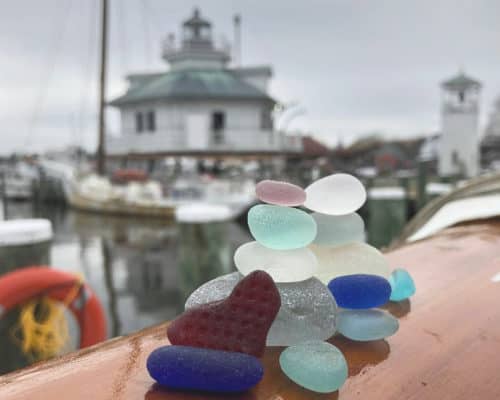It was 1963. The United States Coast Guard had just mandated that captains operating commercial fishing vessels be licensed, but they hadn’t finalized the test yet, or the testing protocols. They asked the menhaden fishing industry, whose industrial center was in Reedville, Va., for a couple of volunteers to take the new exam, and the local bosses chose two of their bright, young captains, Wendell G. Haynie and Irving “Bucky” Deihl, Jr. At the time, Haynie, age 31, was working for Haylow Fisheries in Wildwood, N.J., and Deihl was working for Haynie Products in Reedville.
“Nobody knew what to expect; not us and not the U.S. Coast Guard,” said Haynie, who had worked in the fishing industry most of his young life. “The Coast Guard was trying to decide what questions to ask us, and we were trying to anticipate what questions we would be asked.”
Haynie had learned seamanship from his father, his uncles and two of his four older brothers who were also menhaden fishing boat captains on the Chesapeake. “Back then licensure was not required. We were fishermen. We knew the water, the boats and how to fish. My father and brothers would need to take the new Coast Guard exam to operate their fishing boats, so Bucky and I were picked to be the fleet guinea pigs. They made us an appointment with the U.S. Coast Guard at the Baltimore Custom House, and off we went. We stayed in a Baltimore hotel during the two days of testing. The first day we took a written exam. The second day we took an oral exam.
“The U.S. Coast Guard tutored us a bit before the exam. We already knew the rules of the road, most of the light configurations and a little parallel rule navigation. We didn’t need much navigation know-how. You just go offshore to find the fish and then turn around and head west to get back home,” Haynie explained with a chuckle. “The fish are not far offshore; there’s nothing for them to eat out there.”
Their first day of test questions consisted mainly of Rules of the Road and vessel right-of-ways, not unlike the test for today’s six-pack license. The second day consisted of oral questions, mostly problem solving. Haynie vividly remembers one question: “If you were tied to a dock with the ebbing tide holding you against the dock, how would you get your vessel off of the dock?” Haynie answered with honesty, “I’d call the Purser to use the two seine boats like a tug to pull us off.” He passed.
Haynie and Deihl returned to Reedville and their prospective companies to tutor the rest of the fishing fleet captains. However, acquiring the first U.S. Coast Guard Merchant Marine License was Haynie’s last hurrah in the fishing industry. In 1964, he went to pharmacy school.
So why did he quit? “In the beginning fishing was fun! Before we had two-way radios and spotter airplanes, no one knew how the other boats were doing until we got in at night. Once, off of Cape Charles, we came on the fish near the inshore creeks and caught our fill within sight of the factory, but we never told anyone until we came back in.” All of the other “boats had continued further offshore to fish.
“Another time, off Atlantic City, the fog was so thick that we only went a mile offshore. There were fish all over! We had a full load in two to three hours, about the time the fog lifted. Only then did we see another fishing boat nearby. Neither of us knew the other was there.
But the use of spotter planes and radio communications made the industry quite competitive. It just wasn’t the way it used to be, so I got out.”
Once he became a pharmacist, he didn’t captain any more fishing boats, but he, his wife and their three daughters did spend the next 17 years cruising the Bay on a houseboat with a gill net on the bow and oyster tongs on the stern. Later, he purchased a wooden 1956 Matthews Martinique cabin cruiser, Seaboard, which took them as far as Annapolis and Washington, D.C.
Today the restored and lovingly maintained Seaboard resides in a covered slip beside the Haynie’s home. The menhaden fish factory is just around the bend. Meanwhile, Haynie has been instrumental in preserving the fishing industry’s history at the Reedville Fishermen’s Museum. He has enjoyed his life upon the water and has given back to it in many ways, but the ultimate achievement of this waterman hangs on the den wall behind his easy chair: U.S. Coast Guard License Number 1.
–Sarah Forbush Southworth



